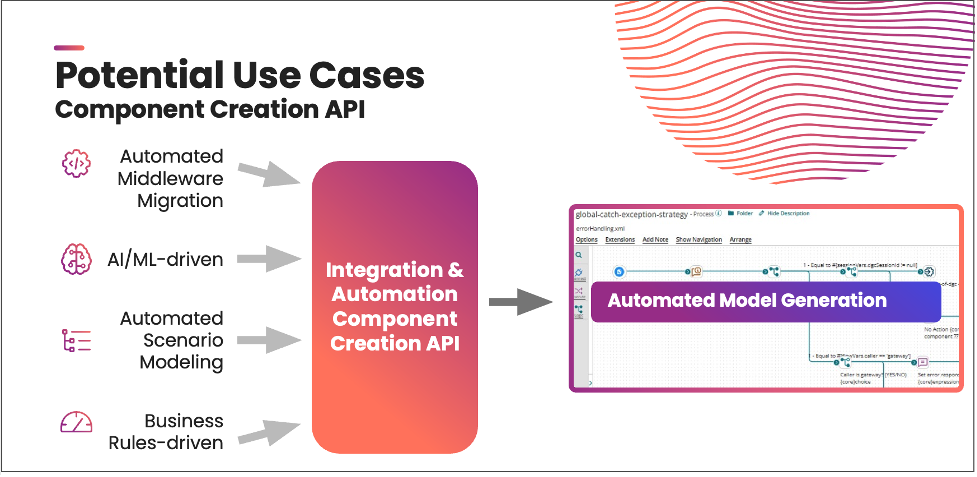Boomi is now providing public access and support for an application programming interface (API) that allows customers and partners to automate the creation of integrations for a wide range of use cases (Figure 1). Initially developed as the foundation for AI-generated integrations in Boomi AI, the Boomi Integration Component Creation API helps users accelerate innovation by leveraging their expertise and industry-specific skills.
Boomi’s customers and partners in manufacturing, healthcare, retail, finance, education, and other industries can now take advantage of new vertical solution opportunities. It’s easy to build solutions — including those that leverage AI — to automate the creation of integration models using the new API.

Figure 1 – Potential uses cases for the Boomi Integration Component Creation API
For more information on how to use the Integration Component Creation API, see the Boomi Community page on this topic.
______________________________________________
*Reference implementations are provided as-is. The terms and conditions of Boomi’s support do not apply to reference implementations.

